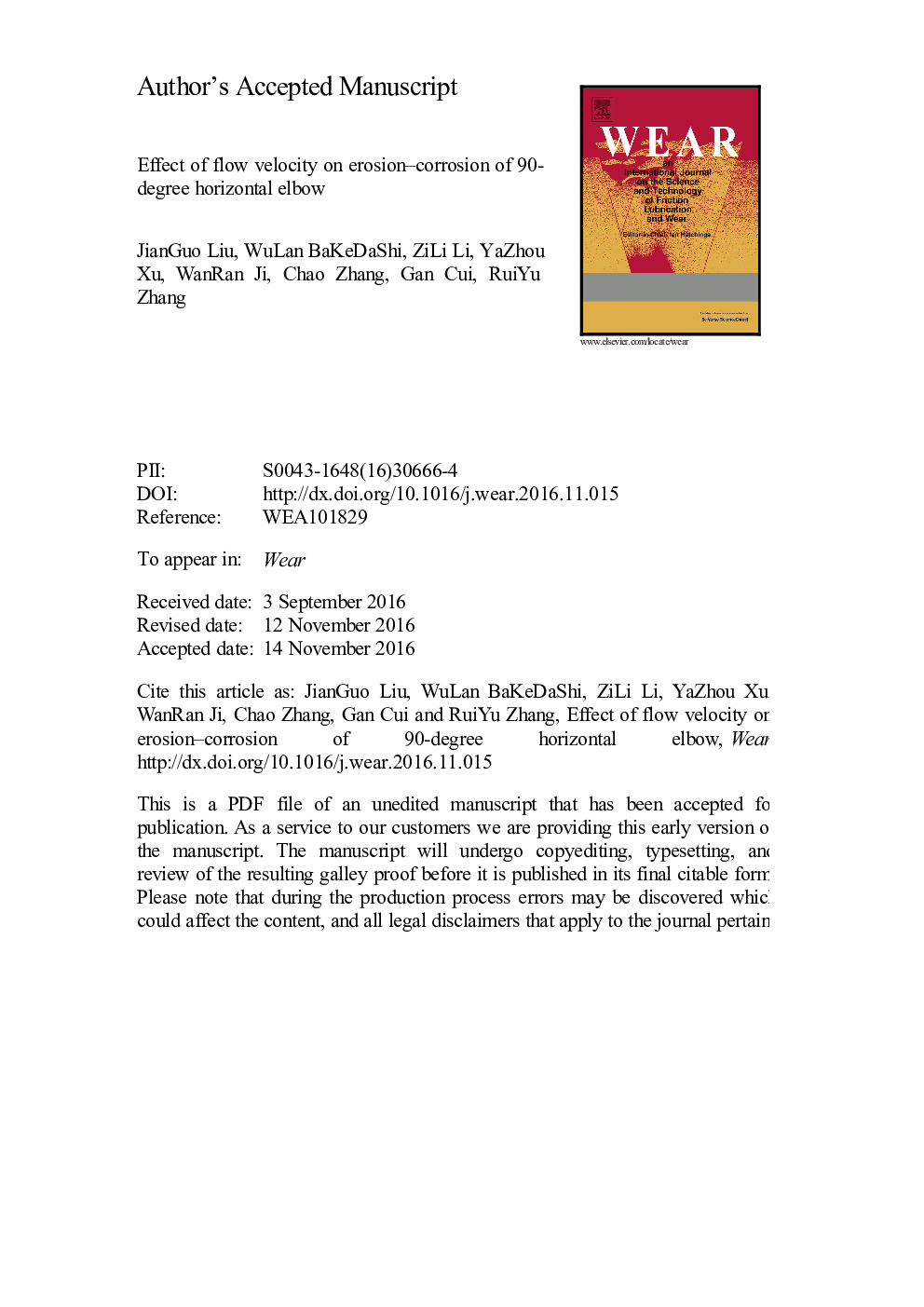| Article ID | Journal | Published Year | Pages | File Type |
|---|---|---|---|---|
| 4986720 | Wear | 2017 | 21 Pages |
Abstract
Erosion-corrosion is a serious problem in oil and gas gathering and transportation pipeline systems; specifically, the elbow is the weak part. Erosion-corrosion at different locations of a horizontal steel elbow through which a sand slurry was passed at different velocities was studied using weight loss measurement. Erosion samples were characterized using three-dimensional confocal microscopy and computational fluid dynamics was used to characterize the flow patterns and distribution of sand particles in the elbow. The erosion-corrosion rate increased most as the fluid velocity increased from 3.5 to 4.0Â m/s. Increasing particle velocity increased the mechanical effects of the particles and induced secondary flow, leading to differing velocity contours in different cross-sections of the elbow, and thereby differing rates of erosion-corrosion. The maximum rate appeared in the outer part (annular angles Ï=45, 90, and 135 degrees) and bottom of the inner part (annular angles Ï=225, 270, and 315 degrees) of the elbow outlet with an axial angle between 75 and 90 degrees.
Related Topics
Physical Sciences and Engineering
Chemical Engineering
Colloid and Surface Chemistry
Authors
JianGuo Liu, WuLan BaKeDaShi, ZiLi Li, YaZhou Xu, WanRan Ji, Chao Zhang, Gan Cui, RuiYu Zhang,
